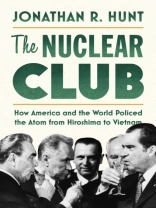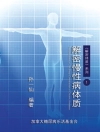The Nuclear Club reveals how a coalition of powerful and developing states embraced global governance in hopes of a bright and peaceful tomorrow. While fears of nuclear war were ever-present, it was the perceived threat to their preeminence that drove Washington, Moscow, and London to throw their weight behind the 1963 Limited Test Ban Treaty (LTBT) banishing nuclear testing underground, the 1967 Treaty of Tlatelolco banning atomic armaments from Latin America, and the 1968 Nuclear Non-Proliferation Treaty (NPT) forbidding more countries from joining the most exclusive club on Earth.
International society, the Cold War, and the imperial U.S. presidency were reformed from 1945 to 1970, when a global nuclear order was inaugurated, averting conflict in the industrial North and yielding what George Orwell styled a ’peace that is no peace’ everywhere else. Today the nuclear order legitimizes foreign intervention worldwide, empowering the nuclear club and, above all, the United States, to push sanctions and even preventive war against atomic outlaws, all in humanity’s name.
Innehållsförteckning
Introduction: The Most Exclusive Club on Earth
1. ’Peace That Is No Peace’: Revolution and Reaction After Hiroshima, 1945–1955
2. ’Uncontrollable Anarchy’: Founding the Nuclear Club, 1956–1961
3. The Atomic Frontier: John F. Kennedy and Nuclear Containment, 1960–1962
4. Pax Nuclearis: Khrushchev, Kennedy, Mao, and the Moscow Treaty, 1962–1963
5. An ’Impossible Possibility’: Lyndon Johnson and the Nonproliferation Treaty That Failed, 1963–1965
6. ’This Side of the Angels’: LBJ, Vietnam, and Nuclear Peace, 1964–1966
7. ’Tall Oaks from Little Acorns’: Making the Treaty of Tlatelolco, 1963–1967
8. ’A Citadel of Learning’: Building an International Community, 1966–1968
9. ’A Decent Level of International Law and Order’: Final Negotiations for the NPT, 1967–1970
Conclusion: Saving Humanity from Itself
Om författaren
Jonathan Hunt is Assistant Professor of Strategy at the United States Air War College.












